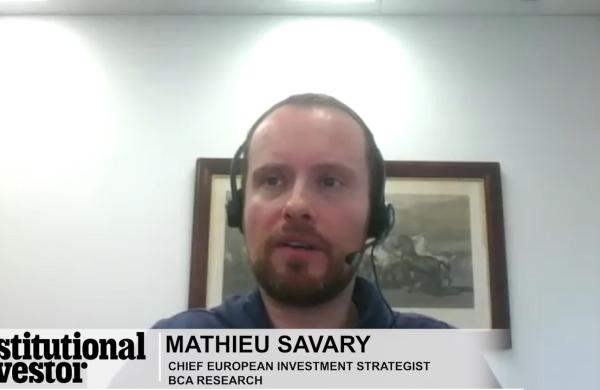Back in 2008, the IMF said that “development funds” were part of the sovereign wealth fund community; they are vehicles that “typically help fund socio-economic projects or promote industrial policies that might raise a country’s potential output growth”. At the time, I thought these development funds were (and would remain) a rather small sub-group compared to the other sub-groups that the IMF lumped into its definition of SWFs (i.e., stabilization funds, savings funds, reserve investment corporations, and contingent pension reserve funds). Boy was I wrong.
As it turns out, states around the world have taken to using ‘sovereign development funds’ to achieve a variety of local development objectives. In most cases, these vehicles are launched as mechanisms to unlock capital in what are otherwise capital-starved industries or regions as well as create efficiency and discipline where none exists. And so the governments launched these quasi-independent investment agencies in the hope that they would serve as catalysts for domestic financial and real-asset markets. And it’s been rather dramatic.
In case you think I’m overstating the importance of this trend, let me rattle off the first 20 SDFs that come to mind: 1) AP6, Sweden; 2) Central Huijin, China; 3) Emirates Investment Authority, UAE; 4) Hellenic Republic Asset Development Fund, Greece; 5) Infrastructure Fund, NSIA, Nigeria; 6) Khazanah, Malaysia; 7) Mubadala, UAE; 8) Mumtalakat, Bahrain; 9) National Development Fund, Iran; 10) National Development Fund, Taiwan; 11) National Development Fund, Venezuela; 12) Oman Investment Fund, Oman; 13) Palestine Investment Fund, Palestine; 14) Public Investment Corporation, South Africa; 15) Public Investment Fund, Saudi Arabia; 16) Russia Direct Investment Fund, Russia; 17) Samruk-Kazyna, Khazakhstan; 18) State Capital Investment Corporation, Vietnam; 19) Strategic Investment Fund, France; and 20) Strategic Investment Fund, Italy. And there are also the funds that have some sort of domestic mandate to deal with in addition to a more traditional portfolio of assets (e.g., CalPERS, CDPQ, KIC, Temasek, etc.). In short, just as the more traditional SWFs were seen as mechanisms to avoid Dutch Disease and facilitate intergenerational savings, these funds are seen as tools to kick start local economies and markets.
But this raises quite an important question: How should these funds be set up to achieve their objectives? After all, they will likely become a direct investor in private assets in very difficult markets. If they are going to be successful in this tough job, they need to be set up correctly! And that’s precisely what I’m interested in helping them do. And because I’m a nice guy, I’ll do it for free. (Actually, this is one of my projects at Stanford so I’m technically getting paid to do it, but you get the point.) Anyway, here are the most important organizational characteristics that I’ve come up with to date for these investments vehicles. (Please feel free to ping me with your ideas, critiques, or kudos here.)
In large part, the factors below are based on my belief that these vehicles need to optimize for two factors to be successful: 1) They need to be able to generate high investment returns (if they can’t, then the investments should be done via the state budget); and 2) They need to be able to attract co-investors from abroad so that the capital they deploy locally has a levered impact on the economy and society. Anyway, in order of importance, here’s what I see as the most important factors in a SDF’s success:
1) Commercial Orientation: The sponsor is setting up the SDF outside the government to create a credible third party investor. As such, the new vehicle should have a clear, commercial mandate that will guide the management team’s decision-making and help other investors understand and relate to its mission.
2) Governance: The SDF must have a robust governance framework that can stand up to foreign due diligence. Indeed, if this fund is going to originate deals locally and bring co-investors alongside, it needs to be able to prove that it is in fact doing what it says it’s doing. The SDF also must develop trust through regular transparency and accountability to an independent Board and the co-investment community (at minimum).
3) Local Access: The SDF should have unrivaled expertise in everything within the local market; it must be able to source, assess, structure, and de-risk (as appropriate) the investment opportunities in a credible way that provides confidence to the co-investment partners that a return objective will be met. The SDF could also enjoy privileged access to local investment opportunities, such as first right of refusal to all PPPs.
4) Top Talent: Co-investors will need to be comfortable with the quality of the investment team housed in the SDF. It’s crucial that the individuals be investors of the highest standing and, ideally, that they have a track record to back it up. This is particularly important if the SDF is leading the transactions (which it probably will).
5) Local Voice: At times it can be challenging for foreign investors to hold sway over local government priorities. As such, the SDF should provide a point of contact for international investors to make their voices heard among the local policy makers. The SDF can thus lobby on behalf of the international community of investors with the local government (for example, in order to streamline the PPP regulation and policies).
6) De-Risking: In certain extreme circumstances, it may be necessary for the SDF to be in a ‘first loss’ position with certain guarantees around local risks.
With these factors in place, I think SDFs could actually be useful to help catalyze local markets. But what do you think?






